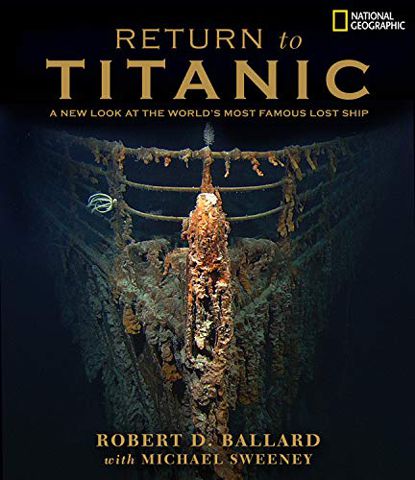|
Almost twenty years after making the world's most famous underwater discovery, Robert Ballard returns to Titanic with hi-tech cameras and robots to provide the clearest, most dramatic images ever seen.
Ballard documents what has become of the world's best-known ship, torn apart by salvagers over the last 2 decades, and pronounces a new and vital conservation ethos - that future such wrecks must be preserved as historical monuments.
This compelling, illustrated book is a journey back in time to the tragic sinking of the Titanic in 1912; a hard look at the present salvaging and natural deterioration of the wreck; and a blueprint for future conservation of this icon.
Says Ballard, "every possible book has been written on the Titanic, and Titanic addicts have them all. They will not have this."
RETURN TO TITANIC brings new dimension, visually and factually.
First, the incomparable hi-tech cameras Ballard created to document wrecks on the Mediterranean seafloor in summer 2003 will be used to reveal the changes in Titanic since the first images were made by National Geographic in 1985.
Second, he will analyze the salvaging of the wreck by private groups, as well as the natural deterioration since 1985; finally he will establish the global conservation ethos that this and other wrecks be revered as "pyramids of the deep," rather than ransacked.
TITANIC has 5 chapters in 192 pages, with 125 images, diagrams, and maps. Images will include period pictures and drawings from the early 1900s, pictures of the 1985 discovery of the wreck, and modern images, culminating in the hi-tech images of the June 2004 expedition.
Sweeney's deft hand combines with Ballard's own intriguing story of discovery, his masterminding of robots and hi-definition cameras to document the wreck, and his commitment to conservation in the 21st century.
The human element plays a big part in RETURN TO TITANIC, as Ballard and Sweeney clarify that technology and conservation are but means to preserving the spirits of the humans lost in the tragedy.
Sidebars throughout, identify the artifacts of survivors, such as letters, watches, clothing, and tell their stories.
|



